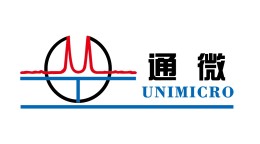方案详情文
智能文字提取功能测试中
0022-3565/05/3123-1090-1096$20.00THE JOURNAL OF PHARMACOLOGY AND EXPERIMENTAL THERAPEUTICSVol. 312, No. 377123/1190752Printed in U.S.A.Copyright O 2005 by The American Society for Pharmacology and Experimental Therapeutics 1091Renal D-Amino Acid Oxidase Conversion of D-NNA 1090 Renal D-Amino Acid Oxidase Mediates Chiral Inversion ofN-Nitro-D-arginine Yan-Fei Xin, Xiang-Jun Zhou, Xi Cheng, and Yong-Xiang Wang Laboratory of Pharmacology, School of Pharmacy, Shanghai Jiao Tong University, Shanghai, ChinaReceived September 4, 2004; accepted October 19, 2004 ABSTRACT N-nitro-D-arginine (p-NNA), i.v. injected into rats, produced apressor response, and was presumed to act via chiral inversioninto NS-nitro-L-arginine (L-NNA), an inhibitor of nitric oxide syn-thase. We examined the possible role of renal p-amino acidoxidase (DAAO) in the chiral inversion of D-NNA to L-NNA. Inpentobarbital-anesthetized rats, L-NNA was detected via cap-illary electrochromatography in the blood immediately after i.v.injection of D-NNA. The time course of appearance of L-NNAparalleled the increase in blood pressure elicited by D-NNA.Unilateral renal ligation partially, and bilateral ligation com-pletely, blocked the pressor response as well as the conversion Nitric oxide (NO), a second messenger, is synthesized byNO synthase that catalyzes the oxidation of L-arginine toform NO and L-citrulline. Certain analogs of N-substitutedarginine such as N-monomethyl-L-arginine,N -nitro-L-ar-ginine (L-NNA), and N-nitro-L-arginine methyl ester havebeen shown to inhibit NO synthesis and endothelium-depen-dent relaxation of isolated arteries and to induce sustainedpressor responses in whole animals (for review, see Moncadaet al., 1991; Wang et al.,1993). It has been widely reportedthat the N-substituted arginine analogs exhibit a high de-gree of stereospecificity such that the L but not D enantiomersare capable of inhibiting NO synthase and increasing bloodpressure (Moncada et al., 1991;Wang et al., 1993). A number of unexpected observations have challenged thisdogma. We and others have shown that N-nitro-D-arginine(D-NNA) is as efficacious as L-NNA in increasing blood pres-sure in anesthetized rats (Wang and Pang, 1990;Raszkiewiczet al., 1992) and conscious rats (Wang et al., 1991,1993), andin inhibiting endothelium-dependent relaxation ex vivo(Wang et al., 1993; Cheng et al., 1997). There are observa- ( This work was s upported by Grants 30472052, 2003AA2Z347A, a nd 04DZ19214 f r om t h e N a tional N a tural Sciences F o undation of C h ina, the Ministry o f Science and T echnology o f China, a n d the Science Foundation ofShanghai M unicipal C ommission of Sciences and Technology.Article , publication date, and citatio n informatio n can be found at htt p ://jpet.aspetjournals.org. doi:10.1124/jpet.104.077123. ) of D-NNA to L-NNA. Furthermore, injection into conscious ratsof sodium benzoate, a selective DAAO AiRn-hNiNbAitor, completelyblocked the pressor response to naive D-NNA, but not pressorresponse to D-NNA preincubated with homogenates of thekidney. Homogenates of the kidneys, liver (lesser degree), andYCbrain (much lesser degree) converted D-NNA to L-NNA, and thechiral inversion was blocked by the addition of benzoate. More-over, D-NNA chiral inversion correlates with the activity ofDAAO. Our results reveal a novel pathway of chiral inversion ofD-amino acids where the renal DAAO plays an essential rolethat accounts for the biological activity of D-NNA. tions that support the notion that D-NNA is converted into anactive compound in vivo. Pressor response to D-NNA is slowerin onset than L-NNA (Wang et al., 1991). In addition, thepotency of pressor response to D-NNA is one-half that ofL-NNA, whereas the potency of D-NNA is only 3% that ofL-NNA in vitro (Wang et al., 1993). Furthermore, pressorresponse to D-NNA, similar of that to L-NNA, is blocked byL-arginine but not D-arginine (Wang et al., 1991). These re-sults lead to the hypothesis that D-NNA is converted in vivoto L-NNA (Wang et al., 1993). This postulation of in vivoconversion from D-NNA into L-NNA was later verified inanother laboratory through the use of high-performance liq-uid chromatography (Wang et al., 1999). The enzymatic pro-cess and the organs responsible for the conversion remainunclear. There is, however, support that the kidney may playan important role in the chiral inversion of D-NNA into L-NNA. The in vitro inhibitory action of D-NNA on endotheli-um-dependent relaxation is negligible but is markedly in-creased following the incubation of D-NNA with homogenateof the kidney (Cheng et al., 1997). Furthermore, ligation ofthe kidney blocks the action of D-NNA on blood pressure(Wang et al., 1999). The aim of this study was to examine the mechanism bywhich D-NNA is converted into L-NNA. The chiral separationof D-NNA and L-NNA was achieved via capillary electrochro-matography (CEC), which is capable of separating D- and ( ABBREVIATIONS: NO, nitric oxi d e; L-N N A, NC-n i tro-L-arginine;D-NNA, NS-ni t ro-D-arg i nine; CEC, capil l ary elec t rochromatography; DAAO, D-amino acid oxidase; M AP, m e an arterial pressure; AUC, area under the curve. ) L-amino acids with high resolution and efficiency. We exam-ined through bioassay and chemical analysis whether kidneyligation inhibited both pressor response to D-NNA and chiralinversion. Since D-amino acid oxidase (DAAO) has been re-ported to catalyze D-amino acid chiral inversion in mammals(Hasegawa et al., 2004), we also examined whether inhibitionof the action of renal DAAO through administration of so-dium benzoate would abolish chiral conversion and pressorresponse to naive D-NNA and D-NNA that was previouslyincubated with homogenate of the kidneys. Finally, we ex-amined whether pure DAAO and tissue homogenates fromvarious organs including the kidneys eliminated D-NNA aswell as converted it into L-NNA. Materials and Methods Drugs and Reagents. D-NNA was obtained from Bachem Bio-sciences (King of Prussia, PA), and L-NNA and aspartame were fromAcros Organics (Geel, Belgium). DAAO (EC 1.4.3.3 from porcinekidney) was obtained from Sigma-Aldrich (St.Louis, MO). All otherreagents were purchased from Shanghai Chemical Reagents Co.(Shanghai, China). D-NNA and L-NNA were dissolved in 5% glucosesolution, and the dissolution required 20 min of ultrasonication. Animal Preparation. Male Sprague-Dawley rats (250-350 g;Fudan University Medical Animal Center, Shanghai, China) wereanesthetized with sodium pentobarbital (65 mg/kg i.p.).Polyethylenecannulae (PE50; BD Biosciences, San Jose, CA) were inserted intothe left femoral artery for the measurement of mean arterial pres-sure (MAP) by a pressure transducer (model YPJ01; Chengdu In-struments, Sichuan, China) and both femoral veins for the injectionof drugs and the collection of blood samples. The body temperaturewas maintained at 37°℃ with a heating device connected to anelectrical heated thermostat. In the kidney ligation studies, theanesthetized rats were given laparotomy followed by unilateral orbilateral ligation of the renal arteries and veins or sham-operation.In studies involving the use of conscious rats, the vascular cannulaewere tunneled subcutaneously and exteriorized at the back of theneck. The rats were given >12 h of recovery from anesthesia andsurgery before use. Measurements of D-NNA and L-NNA. D-NNA and L-NNA weremeasured by CEC in the chiral ligand exchange mode (Wang et al.,1999). Plasma samples (100 pl) or incubation samples (100 ul) ofD-NNAor L-NNA were deproteinated through mixing for 20 min withmethanol/acetone(1000 ul; v/v=1:1). After centrifugation at 10,000rpm for 20 min, the organic layer was volatilized at -20°C, and theresidue was dissolved in acetate buffer (pH 5.0, plasma in 100 pl,andincubation samples in 5 ml). After mixing for 1 min, an aliquot (10 nl)of the sample was injected into the CEC system (Unimicro Technol-ogies Inc., Pleasanton,CA). Cupric acetate (1 mM) and aspartame (2mM) were dissolved in the methanol/acetate buffer (pH 5.0, v/v =1:20) to allow the formation of diastereomeric pairs with D-NNA orL-NNA. The diastereomeric pairs were separated on a reverse phaseC18 column (75 um × 20 cm; Unimicro Technologies, Co., Ltd.,Shanghai, China) at detection wavelength of 280 nm. The retentiontimes were 17 and 19 min for L-NNA and D-NNA, respectively. Thesamples were quantified against standard curves that ranged from0.025 to 0.75 mM (r²> 0.98). The between-day (n =5) precisionvalues measured by the time and area under the curve were 4.3 and4.8% for L-NNA and L-NNA, respectively. The within-day precision ofthe quality control samples was 2% for both L-NNA and D-NNA. Preparation of Tissue Homogenates. Male Sprague-Dawleyrats were killed by a blow at the back of the neck. The kidneys, liver,lungs, heart, brain, and skeletal muscles were removed and washedwith Tris-HCl buffer (4°C, 0.1 M, pH 8.2). Tissue samples (1 g each)were homogenized in Tris-HCl buffer (3 ml, pH 8.2) at 4°C with ahomogenizer (Fluko Equipment Co., Shanghai, China). The homog- enates were centrifuged at 1500 rpm for 10 min, and the superna-tants were used for the determination of the activities of DAAO andconversions of D-NNA. Tissue Homogenate Incubation with D-NNA. The effects ofvarious homogenates from tissue (kidneys,liver, heart, lungs,brain,and skeletal muscle, n =5 rats each group) on the conversion ofD-NNA into L-NNA were determined. The supernatants (200 ul) ofthe tissue homogenate were incubated with D-NNA (200 ul, 50 mM)dissolved in Tris-HCl buffer plus additional Tris-HCl buffer (150 ul)in a shaking bath (700 rpm) at 37°C for 30 min. In some experiments,the homogenate was replaced with DAAO (200 ul of 13.5 units/ml,dissolved in Tris-HCl buffer, pH 8.2). The control samples weretreated similarly, except that the buffer (100 pl) was replaced bysodium benzoate (100 ul of 100 mg/ml), and in some cases, superna-tants from the homogenate were denatured through heating (10 minat 100°C). The blank control contained the same components butwith saline in place of the D-NNA solution. The incubation mixtureswere centrifuged at 10,000 rpm for 15 min and filtered throughMillex-GP (0.22 um × 33 mm; Nihon Millipore Ltd., Tokyo, Japan)before injection into rats. The incubation supernatants were used forin vivo functional studies or in vitro and ex vivo determination ofD-NNA and L-NNA by CEC. Determination of the Activity of DAAO. The activity of DAAOwas determined according to the keto acid method (D'Aniello et al.,1993; Sarower et al., 2003). The supernatants (200 ul) of the homog-enates were incubated with D-alanine (200 ul of 0.1 M dissolved inthe above Tris-HCl buffer for 30 min in a shaking bath (700 rpm) at37°C. Afterward, trichloroacetic acid (200 ul of 25%) was added to theincubated mixture, mixed again, and centrifuged at 12,000 rpm for10 min. The supernatant (400 ul) was mixed with 2,4-dinitrophenyl-hydrazine (400 ul of1 mM in 1 MHCl) and incubated at 37C for 10min. Subsequently, NaOH (800 ul of 1.5 M) was added and mixed.The mixture was kept at room temperature for 10 min, and theabsorbance was read at 445 nm against a blank sample consisting ofthe same mixture without D-alanine. The activity of DAAO in thehomogenates was quantified against the standard DAAO curves(from 3-54 units/ml,r²>0.97). Data Analyses. All results were expressed as means ± S.E.M.and analyzed by the analysis of variance followed by Duncan’s mul-tiple range test. A probability of error (P <0.05) was selected as thecriterion of statistical significance. Results Effects of Kidney Ligation on Pressor Response toD-NNA and Chiral Inversion of D-NNA in AnesthetizedRats. The anesthetized rats were divided into four groups(n = 6 in each group), namely, one with unilateral ligationand one with bilateral ligation of the renal artery and veinand two groups with sham operation. Ten minutes aftersurgery, one of the sham-operated groups and both kidney-ligated (unilateral and bilateral) groups were given i.v. bolusinjection of D-NNA (32 mg/kg), and the remaining sham-operated group was given the vehicle (5% glucose, 4 ml/kg).Arterial pressure was monitored for 1 h after drug adminis-tration. Blood samples (0.2ml) were taken at 0, 5,10,20,30,40, and 60 min after injection of the vehicle or D-NNA,whereas MAP was monitored continuously. Plasma sampleswere stored at -20℃ for later analysis by CEC. Baseline MAP was similar among the four groups of rats(92±5,92±4,92±5,and 90±4 mm Hg). In pentobarbital-anesthetized, sham-operated rats, the vehicle did not alterMAP, whereas D-NNA (32 mg/kg) gradually increased MAPto a sustained level of 20 mm Hg above baseline (Fig. 1A).D-NNA caused markedly less increase in MAP in the ratswith unilateral renal ligation relative to the sham-operated 30A 20 0 0 10 20 30 40 50 60 70 Time (min) Fig. 1. MAP (A) and plasma concentrations ofD-NNA(B) and L-NNA (C)after i.v. bolus injection of the vehicle (5% glucose, 4 ml/kg) or D-NNA (32mg/kg) in four groups of pentobarbital-anesthetized rats (n = 6 pergroup).D-NNA and L-NNA were measured by capillary electrochromatog-raphy at the chiral ligand exchange mode. All readings are means ±S.E.M. A, vehicle response in sham-operated rats; ▲, D-NNA in sham-operated rats;口,D-NNA in unilateral kidney-ligated rats;■, D-NNA inbilateral kidney-ligated rats. *, significantly different (P <0.05) fromrespective values in the sham-operated group given D-NNA. rats, but MAP gradually increased to the same level as thatattained in the sham-operated rats. Bilateral kidney ligationcompletely abolished the pressor response to D-NNA. Neither D-NNA nor L-NNA was detectable in the plasmaprior to injection of D-NNA. Bolus injection (i.v.) of D-NNAwas followed by a biphasic disposition curve in the sham-operated rats (Fig. 1B). Unilateral kidney ligation had neg-ligible effects on the disposition of D-NNA. Bilateral kidneyligation nearly completely blocked the beta phase of D-NNAdisposition without affecting the alpha phase. These resultssuggest that the kidneys are the primary organs responsiblefor the disposition of D-NNA. Upon injection of D-NNA into the sham-operated rats, L-NNA was detected immediately, peak concentration (≈30ug/ml) was attained at 20 min, and it slowly declined to aplateau (≈13 ug/ml) at 40 min after injection (Fig. 1C). Uni-lateral kidney ligation significantly reduced the conversion ofD-NNA into L-NNA;however, a similar plateau of concentra-tion of L-NNA (≈13 ug/ml) was reached at 40 min afterinjection. Bilateral kidney ligation, on the other hand, nearlycompletely abolished the conversion of D-NNA into L-NNA,with approximately only 3 ug/ml of the peak plasma L-NNAlevel over the experiment period. In a separate study, i.v. bolus injection of L-NNA (16 mg/kg) in the group of sham-operated, pentobarbital-anesthe-tized rats also elicited a pressor response (Fig. 2A). In con-trast to D-NNA, pressor response to L-NNA was slightlypotentiated (rather than abolished) in rats subjected to bilat-eral kidney ligation. Plasma L-NNA and D-NNA were mea-sured, and no trace of D-NNA was detected after injection ofL-NNA at any time point (results not shown). Plasma L-NNAexhibited a similar biphasic pattern of disposition in thesham-operated rats and rats with bilateral kidney ligation(Fig. 2B). These results show that L-NNA is metabolizedthrough a pathway independent of the kidneys. The area under the curve (AUC) was estimated by thetrapezoidal rule. The chiral inversion rate of D-NNA intoL-NNA was calculated with the formula of Pang and Kwan(1993), where inversion rate = [AUC (L-NNA) after (D-NNA) xDOSE (L-NNA)]/[AUC (L-NNA) after (L-NNA) X DOSE (D-NNA)1. Thecalculated chiral inversion rate of D-NNA into L-NNA was50 ±3% in the sham-operated rats and 10 ± 1% in thebilateral kidney-ligated rats over the observation period.These results suggest that kidneys account for ≈ 80% ofchiral inversion D-NNA in vivo. Effects of Sodium Benzoate (the DAAO Inhibitor) onthe Pressor Response to D-NNA in Conscious Rats. Theconscious rats were divided into four groups (three to six ineach group)under two treatments. One group was pretreatedwith i.v. bolus injection of the vehicle (5% glucose, 4 ml/kg),one group was given a low dose of sodium benzoate (80mg/kg), and the remaining two groups were given a high doseof sodium benzoate (400 mg/kg). Sodium benzoate is a selec-tive inhibitor of DAAO and was reported to effectively blockDAAO activity at these doses in vivo (Moses et al., 1996).Twenty minutes later, the vehicle-pretreated group was i.v.bolus injected with D-NNA (32 mg/kg). The low dose benzo-ate-pretreated group was given D-NNA (32 mg/kg), and thetwo high-dose benzoate-pretreated groups were given thevehicle (5% glucose, 4 ml/kg) or D-NNA (32 mg/kg). Arterialpressure was monitored for 1 h. 70 Fig. 2.MAP (A) and plasma concentration of L-NNA (B) after i.v. bolusinjection of L-NNA (16 mg/kg) in pentobarbital-anesthetized rats (n =3each group). L-NNA and D-NNA were measured by capillary electrochro-matography at the chiral ligand exchange mode. D-NNA was not detectedover the observation period after injection ofL-NNA.O, L-NNA in sham-operated rats;●, L-NNA in bilateral kidney-ligated rats. *, significantlydifferent (P <0.05) from respective values in the sham-operated groupgiven L-NNA. crease in MAP that returned to the baseline 10 min afteradministration (data not shown). As shown in Fig. 3A, i.v.bolus injection ofD-NNA produced a pressor response in thevehicle-pretreated rats, with the slow onset (approximately80% maximum effect at 30 min after injection). Pretreatmentwith benzoate (80 and 400 mg/kg) prevented the pressorresponse to D-NNA in a dose-dependent manner, where 400mg/kg benzoate completely abolished the pressor response. The effect of benzoate on the pressor response to L-NNAwas also tested in two groups of conscious rats (n =3 in eachgroup). As shown in Fig. 3B, i.v. bolus injection of L-NNA(16mg/kg) in the vehicle-pretreated rats caused an increase inMAP that reached a similar maximum as did D-NNA, butwith a faster onset (≈80% maximum after 10 min). Bolusinjection i.v. of sodium benzoate (400 mg/kg) did not alter thepressor response to L-NNA (16 mg/kg). To further confirm that endogenous renal DAAO plays an Fig. 3. Effects of sodium benzoate (inhibitor of D-amino acid oxidase) onMAP (means ± S.E.M) response to i.v. bolus injection of D-NNA (A) orL-NNA (B) in six groups of conscious rats. The rats were i.v. injected withthe vehicle (5% glucose, 4 ml/kg) or sodium benzoate (80 or 400 mg/kg)followed 20 min later by i.v. injection of the vehicle (5% glucose, 4 ml/kg),D-NNA (32 mg/kg), or L-NNA (16 mg/kg).,benzoate + vehicle (n =3);■,vehicle + D-NNA(n =3);A, benzoate (80 mg/kg)+D-NNA (n=4);▲,benzoate (400 mg/kg)+ D-NNA (n = 6); O, vehicle +L-NNA(n =3);●,benzoate (400 mg/kg)+L-NNA(n =3). *, significantly different (P <0.05) from respective values in the group given vehicle ± D-NNA. essential role in the pressor responses elicited by D-NNA,theeffect of kidney homogenate-incubated D-NNA on MAP wasstudied in rats pretreated with benzoate. Two groups of con-scious rats (n =3-5 each group) received i.v. bolus injectionof sodium benzoate (400 mg/kg). After 20 min, the rats re-ceived i.v. bolus injection of the supernatants (4 ml/kg) fromkidney homogenates incubated for 30 min with either thevehicle or D-NNA (equivalent to 32 mg/kg). In benzoate-pretreated rats, injection of supernatants from kidney ho-mogenate incubated with D-NNA produced a marked andsustained pressor response of similar magnitude (Fig. 4) asthat in conscious rats without benzoate pretreatment (Fig.3A). Bolus injection i.v. of supernatants from kidney homog-enate incubated with the vehicle produced a much smaller Time (min) Fig. 4. MAP (means ± S.E.M.) response to i.v. bolus injection of super-natants from kidney homogenates incubated with either the vehicle (5%glucose,▲) or D-NNA (equivalent to 32 mg/kg, ▲) in two groups ofconscious rats pretreated for 20 min with sodium benzoate (400 mg/kg,inhibitor of D-amino acid oxidase, n = 3 each group). *, significantlydifferent (P <0.05) from respective values in the group given superna-tant from vehicle-incubated kidney homogenate. increase in MAP that may be mediated by unknown vasoac-tive substances contained in the homogenates (Fig.4). Correlation between D-NNA Chiral Inversion andDAAO Activity. The inhibitory effect of DAAO on D-NNAconversion was first tested in vitro without tissue homoge-nates. Following 30- and 60-min incubation with DAAO (4.9units/ml), the concentration ofD-NNA (18 mM) was reducedby ≈46 and 73%, respectively; however, no L-NNA was pro-duced (n = 3 each treatment). The DAAO-mediated disap-pearance of D-NNA was blocked by the addition of sodiumbenzoate (0.13 M) (data not shown). D-NNA conversion was measured in the homogenates ofthe kidneys, liver, heart, lungs, brain, and muscle (n = 5 ineach group). Incubation of D-NNA (18.2 mM) for 30 min withhomogenates of the kidneys, liver, and brain resulted in thedisappearance of D-NNA by 50, 31, and 14%, respectively(Fig.5A). In contrast, incubation of D-NNA with homogenatesof the heart, lungs, and muscle did not significantly reducethe concentration of D-NNA. The reductions of the concentra-tion of D-NNA concur with the increase in the concentrationof L-NNA (Fig. 5B), and the two parameters were highlycorrelated (r = 0.92, P <0.05; Fig.5D). Neither D-NNA reduction nor L-NNA production was de-tected in benzoate-treated (1.3×10-M) or heat-denaturedkidney homogenates (data not shown). The activity of DAAOwas highly expressed in the kidneys followed by the liver andbrain, with minimal activities detected in the heart, lungs,and muscle (Fig. 5C). High positive correlations were ob-tained between the activity of DAAO and the disappearanceof D-NNA (Fig. 5E,r=0.92, P<0.05), as well as betweenDAAO activity and L-NNA production (Fig. 5F,r=0.96,P<0.05). Discussion With advent of the chiral separation technology of CEC, itwas possible to demonstrate that plasma L-NNA was pro- duced less than 5 min (first sampling) following i.v. bolusinjection of D-NNA. This chiral inversion is unidirectionalbecause D-NNA was not produced from L-NNA. Moreover,pressor response to i.v. injection of D-NNA corresponds gen-erally to the plasma concentration of L-NNA, but not that ofD-NNA. Approximately 50% inversion ratio of D-NNA/L-NNAwas obtained, which was similar to that previously estimatedby blood pressure measurement (Wang et al., 1991) and byhigh-performance liquid chromatography (Wang et al.,1999).The present results and previous findings (Wang and Pang,1990; Wang et al., 1991,1993,1999) indicate that D-NNAundergoes chiral inversion in vivo to form the active enan-tiomer L-NNA. Together with other reports of the conversionof D-phenylalanine (≈33%; Lehmann et al., 1983) and D-leucine (≈30%; Hasegawa et al., 2000) to the correspondingL-enantiomers, our results further suggest that chiral con-version of D-amino acids into L-amino acids is a commonmetabolic pathway in mammals. However, pressor responses to L-NNA either i.v. bolus in-jected in a naive form or converted from D-NNA were notexactly parallel to plasma concentrations of L-NNA.For ex-ample, after bilateral kidney ligation, blood pressure did notincrease in response to a small rise in plasma L-NNA levels(~5 ug/ml) (Fig. 1), whereas blood pressure remained ele-vated after naive L-NNA administration in rats with plasmaL-NNA levels dropped to below 5 ug/ml (Fig. 2). This discrep-ancy may be because L-NNA’s pressor responses correlatewith its cellular levels in the target cells/tissues rather thanits plasma concentrations. Nitric oxide synthase is located inthe endothelial cells, and L-NNA is a positive charged aminoacid derivative and does not readily pass the cell membrane.It would be reasonable to postulate that L-NNA slowly entersendothelial cells and stays in the cells for a relatively longperiod leading to sustained pressor responses with slow on-set. The hypothesis is supported the following: peak time forL-NNA-induced pressor response was obtained 30 min afterL-NNA injection, although plasma concentration ofL-NNA(≈10 ug/ml) was much below that at injection time (>300ug/ml)(Fig. 2); and pressor response to converted L-NNA wassustained while plasma level of L-NNA dropped from≈30 to~13 ug/ml (Fig. 1). Hence, production of small amount ofL-NNA (3-5 ug/ml) from D-NNA in bilateral kidney-ligatedrats would lead to trace of L-NNA entering endothelial cellsand little effect in blood pressure (Fig.1). On the other hand,once a high dose of L-NNA (16 mg/kg) was administered inboth sham control and bilateral kidney-ligated rats, a largeamount of L-NNA would presumably enter endothelial cellsand subsequently produce long-lasting pressor responseswhen plasma level of L-NNA even dropped to as low as ≈3ug/ml (Fig. 2). The occurrence of D-amino acids and DAAO in mammalshas been reported in recent years, although their physiolog-ical function is unclear (Pilone, 2000). It has been proposedthat D-amino acids are converted to L-amino acids in two stepthat involve oxidation of the D-amino acids to the correspond-ing a-keto acids by DAAO followed by amination to L-aminoacids by the action of yet-unidentified transaminase(s) (Ha-segawa et al.,2000). The existence of DAAO in microorgan-isms, mainly yeasts and bacterium, is related to the ability ofyeasts to use D-amino acids for growth and bacterium to usethem as constituents of the cell wall (Pilone, 2000). In thisstudy, we have found that pure DAAO catalyzed the oxida- Fig. 5. Decrease of D-NNA (A), in-crease ofL-NNA (B), and the activity ofDAAO (C) at 30 min after incubation ofD-NNA (18.2mM) with homogenates ofthe heart, liver, lungs, kidneys, brain,and skeletal muscle (n = 5 rats pertissue). All readings are meansS.E.M. Increase of L-NNA was ex-pressed as percentage ofD-NNA.where 1 unit ofL-NNA was consideredto be derived from 1 unit of D-NNA.Correlations between the rate of disap-pearance of D-NNA and the rate of ap-pearance ofL-NNA (D), the rate of dis-appearance of D-NNA and the activityof DAAO (E), and the rate of appear-ance of L-NNA and activity of DAAO(F). tion of D-NNA in vitro, leading to the elimination of D-NNA by46 and 73% over 30 and 60 min, respectively, but not toproduction of L-NNA. The stereospecificity of DAAO is abso-lute and is restricted to the D-enantiomer even when bothD- and L-amino acids are present. DAAO displays broad sub-strate specificity in vitro and is capable of deaminating neu-tral and basic D-amino acids; however, its most efficient sub-strates are amino acids with hydrophobic side chains (Pilone,2000). Our results show that D-NNA is an excellent substratefor DAAO in vitro. Equally important is the fact that theselective inhibitor of DAAO sodium benzoate was effective inblocking the in vitro chiral inversion of D-NNA by homoge-nates of the kidneys, as well as completely blocking thepressor response of D-NNA in intact conscious rats. More-over, there was a high correlation between the activity ofDAAO and D-NNA conversion in tissues. Our results of theeffectiveness of DAAO in chiral inversion of D-NNA is inagreement with the recent report of the conversion of D-leucine to L-leucine in DAAO-intact mice (ddY/DAAO+) butnot in mutant mice that lack DAAO activity (ddY/DAAO-)(Hasegawa et al., 2004). The importance of the kidneys on chiral conversion of D-NNA was shown by the following observations. Bilateralkidney ligation caused greater inhibition of pressor responseto D-NNA than unilateral ligation of the kidneys, as well asless disappearance of D-NNA and greater appearance of L-NNA. These findings provide the first chemical evidence forthe importance of the kidneys in chiral inversion of D-NNA.Sodium benzoate abolished pressor response to naive D-NNAbut not to D-NNA preincubated with kidney homogenates,thereby showing the involvement of renal DAAO in the con-version of D-NNA. Incubations of D-NNA with homogenates ofthe kidneys caused markedly greater disposition of D-NNAand production of L-NNA than homogenates of the liver,which, in turn, has greater activity than homogenates of thebrain, heart, lungs, and skeletal muscle. The activity ofDAAO is highest in the kidneys followed by the liver andbrain, in accordance with reports of greater expression ofDAAO in the kidneys (Konno et al., 1997; Pilone, 2000; Ha-segawa et al., 2004). Taken together, it is concluded that therenal DAAO plays an essential role in the chiral inversion ofD-amino acids and accounts for approximately 80% D-NNA conversion in the body. The kidney has also been shown to bethe principle organ for the chiral inversion of D-leucine (Ha-segawa et al., 2004). With the recent advent of chromatographic chiral separa-tion and detection, it has become clear that many chiralpharmaceuticals undergo chiral inversion in the body. Suchdrugs include 2-arylpropionic acid analogs (Drummond et al.,1990), the new quinoxaline toposomerase poison 2-[4-(7-chloro-2-quinoxaliny)oxy] phenoxy propionic acid (Zheng etal., 2002), and thalidomide (Eriksson et al., 1998). The met-abolic chiral inversion of 2-arylpropionic acids such as ibu-profen andketoprofen (nonsteroidal anti-inflammatoryagents) has been well characterized. Chiral inversion is nor-mally unidirectional in various species including humans,e.g., from R to S inversion for profens, whereas S to R inver-sion is rare (Jamali et al., 1997). The long-chain acyl-CoAsynthetase and 2-arylpropionyl-CoA epimerase have beenidentified as key enzymes involved in the chiral inversion of2-arylpropionic acids (Reichel et al., 1995, 1997; Brugger etal., 1996). Epimerase mRNA and protein are strongly ex-pressed in the rat liver and kidneys and weakly expressed inheart and brain (Reichel et al., 1995, 1997). Thus, the chiralinversion process for D-amino acids to L-enantiomers is dis-tinctly different from that for 2-arylpropionic acids. In conclusion,L-NNA was detected, and pressor response isobserved soon after injection of D-NNA. Chiral inversion andpressor responses to D-NNA were blocked by kidney ligation(≈80%) and following injection of the selective DAAO blockerbenzoate (completely). However, benzoate did not block pres-sor response to D-NNA that had been preincubated withhomogenate of the kidneys. The pure DAAO disposed D-NNAbut did not produce L-NNA, whereas homogenates of thekidneys, liver (lesser degree), and brain (much lesser degree)disposed of D-NNA while producing L-NNA at the same time.Moreover, D-NNA chiral inversion correlates with the activ-ity of DAAO. Thus, renal DAAO plays an essential but notsufficient role in chiral inversion of D-amino acids. Acknowledgments We thank Catherine C. Y. Pang (University of British Columbia,Vancouver, BC, Canada) for editing the manuscript and providingD-NNA and L-NNA. References ( Brugger R, Garcia AB, Reichel C , W aibel R , Menzel S, B rune K, and Geisslinger G (1996) I solation a nd characterization o f rat l i ver microsomal R- i buprofenyl-CoAsynthetase. Biochem Pharmacol 52:1007 - 1013. ) Cheng X, Wang YX, and Pang CC (1997) Biological activation ofN(G)-nitro-D-arginine1by kidney homogenate. Naunyn-Schmiedeberg's Arch Pharmacol 356:495-499. D'Aniello A, D'Onofrio G, Pischetola M, D'Aniello G, Vetere A, Petrucelli L, andFisher GH (1993) Biological role of D-amino acid oxidase and D-aspartate oxidase:effects of D-amino acids. J Biol Chem 268:26941-26949. Drummond L, Caldwell J, and Wilson HK (1990) The stereoselectivity of 1, 2-phe-nylethanediol and mandelic acid metabolism and disposition in the rat.Xenobi-otica 20:159-168. Eriksson T, Bjorkman S, Roth B, Fyge A, and Hoglund P (1998) Enantiomers ofthalidomide: blood distribution and the influence of serum albumin on chiralinversion and hydrolysis. Chirality 10:223-228. Hasegawa H, Matsukawa T, Shinohara Y, and Hashimoto T (2000) Assessment ofthe metabolic chiral inversion of D-leucine in rat by gas chromatography-massspectrometry combined with a stable isotope dilution analysis. Drug Metab Dispos28:920-924. Hasegawa H, Matsukawa T, Shinohara Y, Konno R, and Hashimoto T (2004) Role ofrenal D-amino-acid oxidase in pharmacokinetics of D-leucine. Am J Physiol Endo-crinol Metab 287:E160-E165. Jamali F, Lovlin R, and Aberg G (1997) Bi-directional chiral inversion of ketoprofenin CD-1 mice. Chirality 9:29-31. Konno R, Sasaki M, Asakura S, Fukui K, Enami J, and Niwa A (1997) D-Amino-acidoxidase is not present in the mouse liver. Biochim Biophys Acta 1335:173-181.of Lehmann WD, Theobald N,Fischer R, and Heinrich HC (1983) Stereospecificity ofphenylalanine plasma kinetics and hydroxylation in man following oral applica-tion of a stableisotope-labelled pseudo-racemic mixture of L- and D-phenylalanine.Clin Chim Acta 128:181-198. Moncada S, Palmer RM, and Higgs EA (1991) Nitric oxide: physiology, pathophysi-ology and pharmacology. Pharmacol Reu 43:109-142. Moses J, Siddiqui A, and Silverman PB (1996) Sodium benzoate differentially blockscircling induced by D-and L-dopa in the hemi-parkinsonian rat. Neurosci Lett218:145-148. Pang KS and Kwan KC (1993) A commentary: methods and assumptions in the kinetics estimation of metabolic formation. Drug Metab Dispos 11:79-84.Pilone MS (2000) D-Amino acid oxidase: new findings. Cell Mol Life Sci 57:1732-1747. Raszkiewicz JL, Linville DG, Kerwin JF Jr, Wagenaar F, and Arneric SP(1992)Nitric oxide synthase is critical in mediating basal forebrain regulation of corticalcerebral circulation. J Neurosci Res 33:129-135. Reichel C, Bang H, Brune K, Geisslinger G, and Menzel S (1995) 2-Arylpropionyl-CoA epimerase: partial peptide sequences and tissue localization. Biochem Phar-macol 50:1803-1806. Reichel C, Brugger R, Bang H, Geisslinger G, and Brune K (1997) Molecular cloningand expression of a 2-arylpropionyl-coenzyme A epimerase: a key enzyme in the inversion metabolism of ibuprofen. Mol Pharmacol 51:576-582. Sarower MG, Matsui T, and Abe H (2003) Distribution and characteristics of D-aminoacid and D-aspartate oxidases in fish tissues. J Exp Zoolog Part A Comp Exp Biol295:151-159. Wang Q, Cwik M, Wright CJ, Cunningham F, and Pelligrino DA (1999) The in vivounidirectional conversion of nitro-D-arginine to nitro-L-arginine. J Pharmacol ExpTher 288:270-273. Wang YX, Cheng X, and Pang CC (1999) Bilateral kidney ligation abolishes pressorresponse to NG-nitro-D-arginine. Eur J Pharmacol 366:175-179. Wang YX and Pang CC(1990) Pressor effect of NC-nitro-L-arginine in pentobarbital-anesthetized rats. Life Sci 47:2217-2224. Wang YX, Poon CI, and Pang CC (1993) In vitro and ex vivo inhibitory effects of L-and D-enantiomers of NG-nitro-arginine on endothelium-dependent relaxation ofrat aorta. J Pharmacol Exp Ther 265:112-119. Wang YX, Zhou T, and Pang CC (1991) Pressor effects of L and D enantiomers ofN"-nitro-arginine in conscious rats are antagonized by L- but not D-arginine. EurJ Pharmacol 200:77-81. ( Zheng H , Jiang C, Chiu MH, C ovey JM, a nd Chan KK (2002) Chiral p harmacoki- n etics and i nversion of e nantiomers of a n e w quinoxaline top o isomerase II b e tapoison in the rat. Drug Metab Dispos 30:344-348. ) Address correspondence to: Dr. Yong-Xiang Wang, Laboratory of Pharma-cology, School of Pharmacy, Shanghai Jiao Tong University, Shanghai 200030,China. E-mail: yxwang@sjtu.edu.cn NG-nitro-D-arginine (D-NNA), i.v. injected into rats, produced apressor response, and was presumed to act via chiral inversioninto NG-nitro-L-arginine (L-NNA), an inhibitor of nitric oxide synthase.We examined the possible role of renal D-amino acidoxidase (DAAO) in the chiral inversion of D-NNA to L-NNA. Inpentobarbital-anesthetized rats, L-NNA was detected via capillary electrochromatography in the blood immediately after i.v.injection of D-NNA. The time course of appearance of L-NNAparalleled the increase in blood pressure elicited by D-NNA. Unilateral renal ligation partially, and bilateral ligation completely,blocked the pressor response as well as the conversionof D-NNA to L-NNA. Furthermore, injection into conscious ratsof sodium benzoate, a selective DAAO inhibitor, completely blocked the pressor response to naive D-NNA, but not pressor response to D-NNA preincubated with homogenates of the kidney. Homogenates of the kidneys, liver (lesser degree), andbrain (much lesser degree) converted D-NNA to L-NNA, and the chiral inversion was blocked by the addition of benzoate. Moreover,D-NNA chiral inversion correlates with the activity of DAAO. Our results reveal a novel pathway of chiral inversion of D-amino acids where the renal DAAO plays an essential role that accounts for the biological activity of D-NNA.
关闭-
1/7
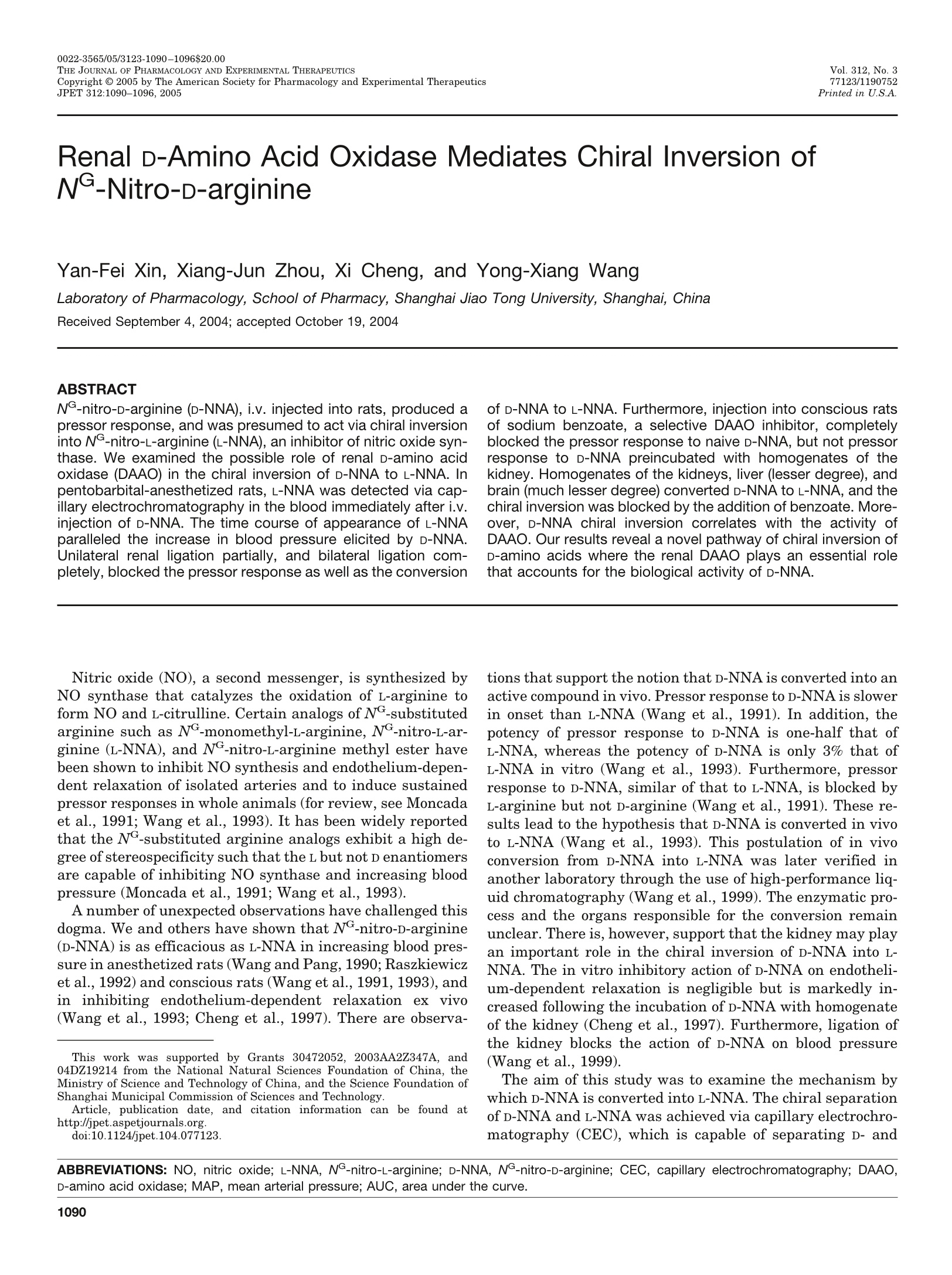
-
2/7

还剩5页未读,是否继续阅读?
继续免费阅读全文产品配置单
上海通微分析技术有限公司为您提供《化学药中药物代谢检测方案(液相色谱仪)》,该方案主要用于化药新药研发中其他检测,参考标准《暂无》,《化学药中药物代谢检测方案(液相色谱仪)》用到的仪器有通微TriSep2100加压毛细管电色谱、高效液相色谱仪EasySep®-3030。
我要纠错
推荐专场
相关方案
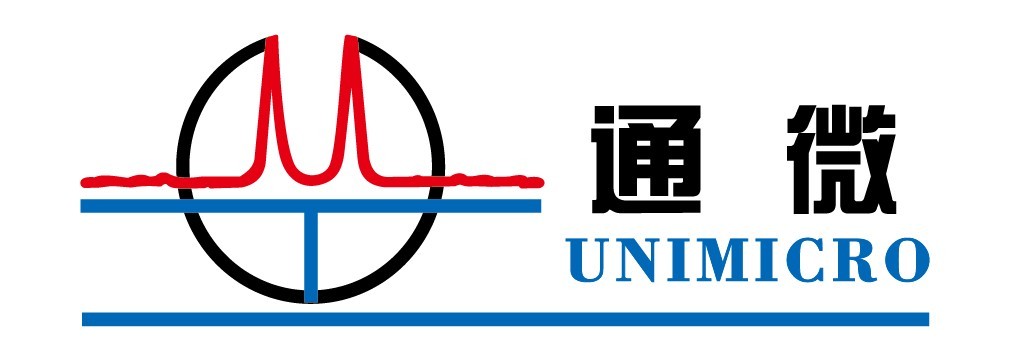


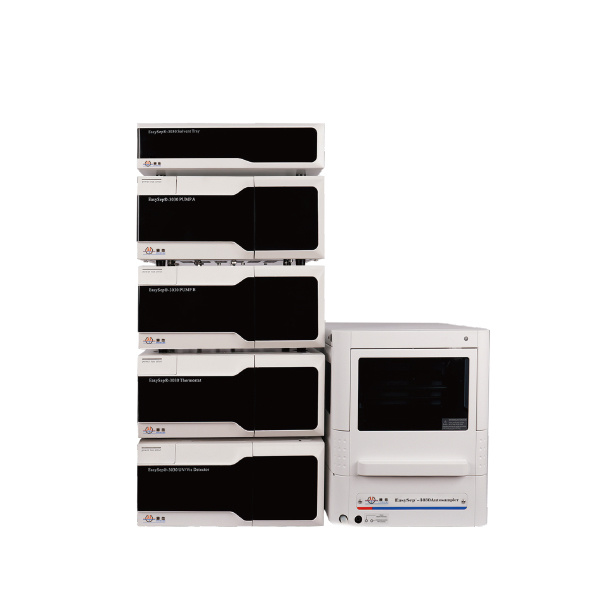
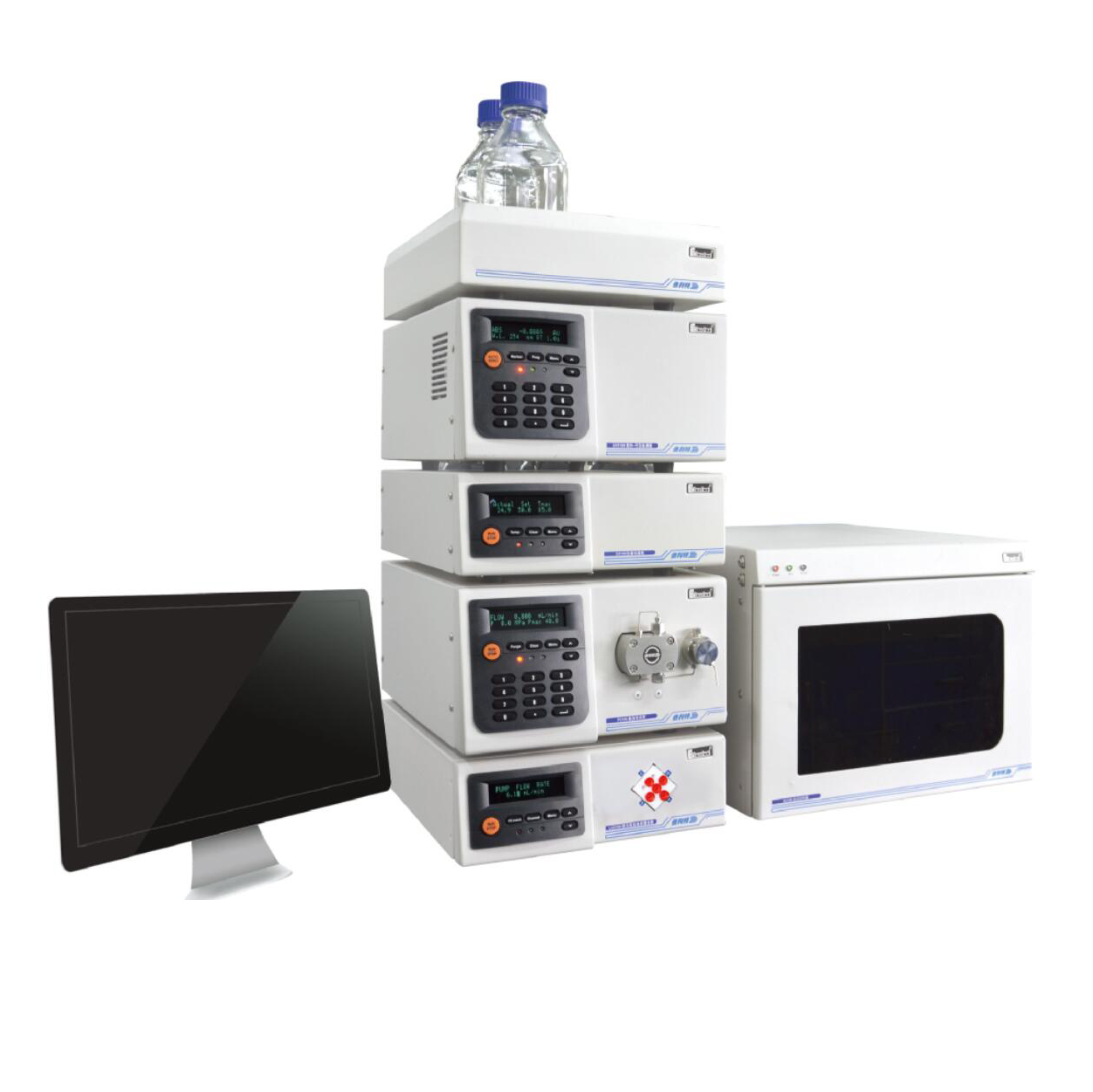
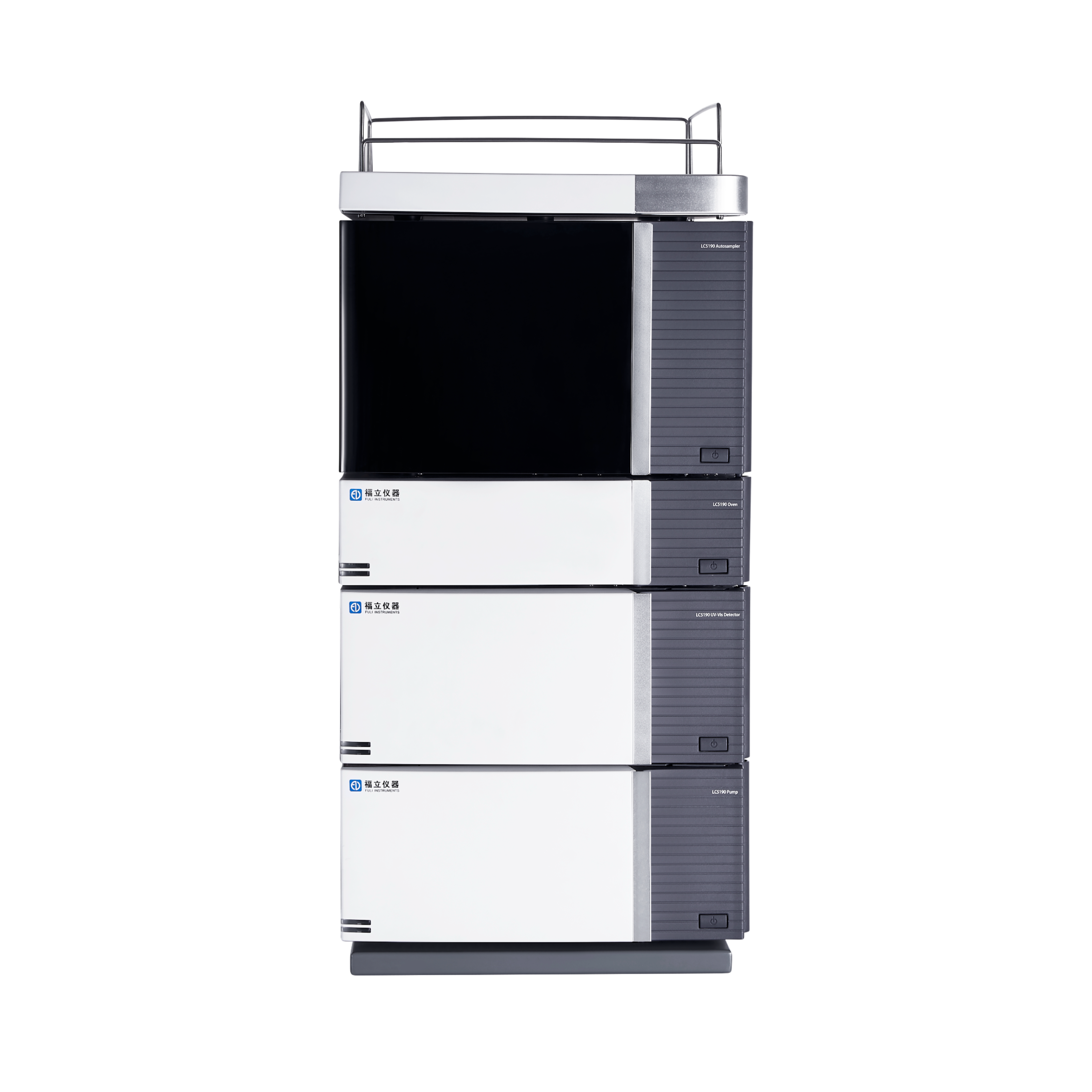
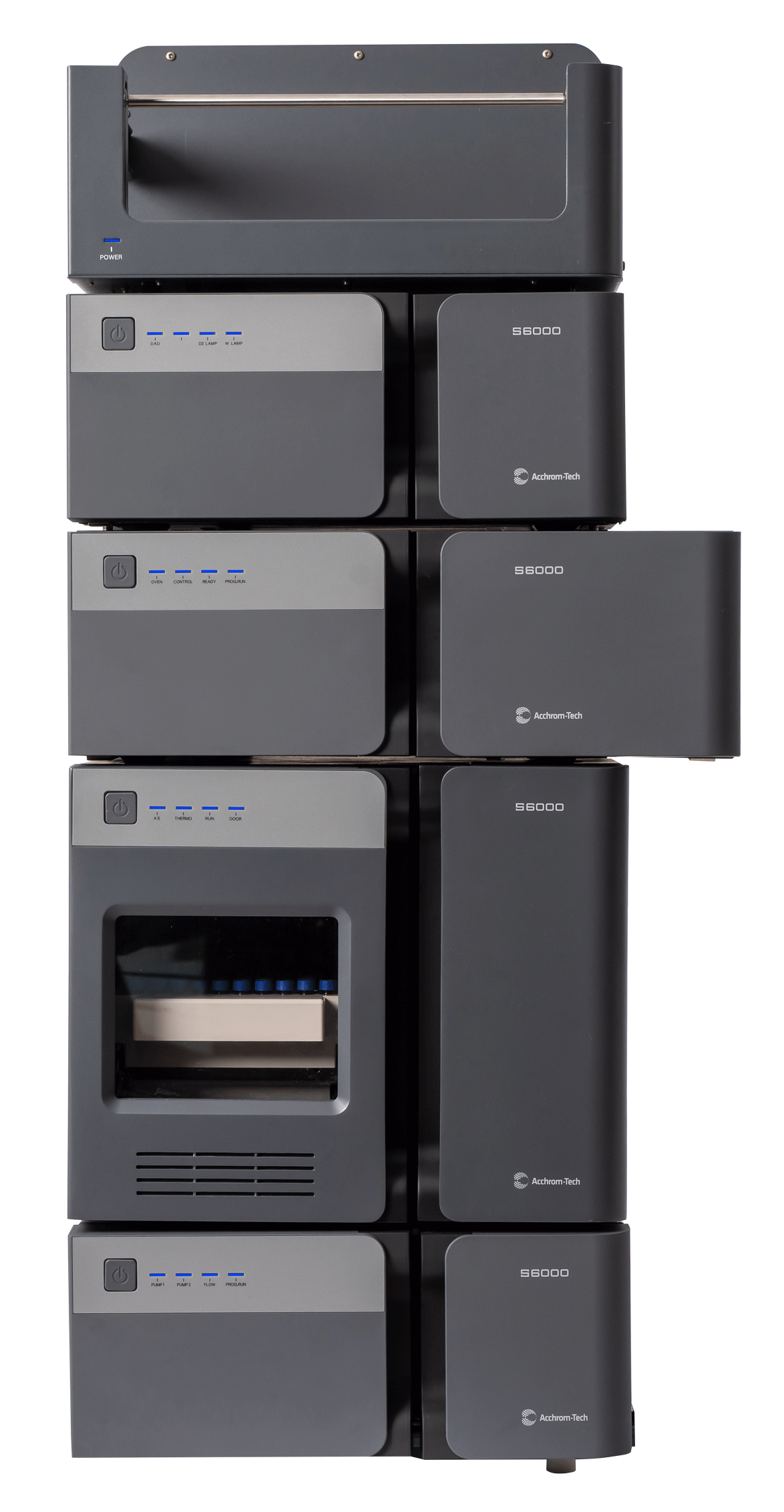
 咨询
咨询